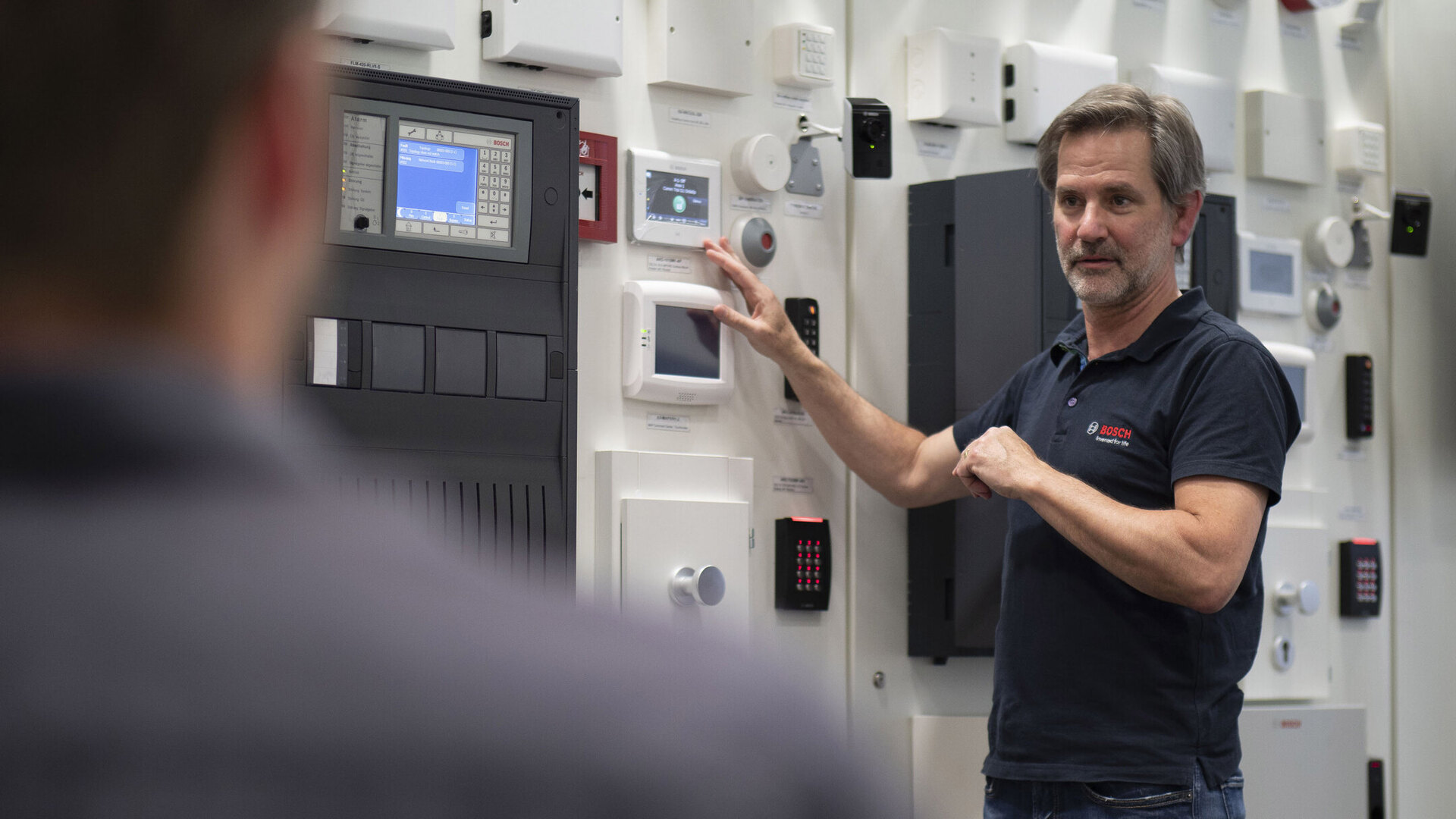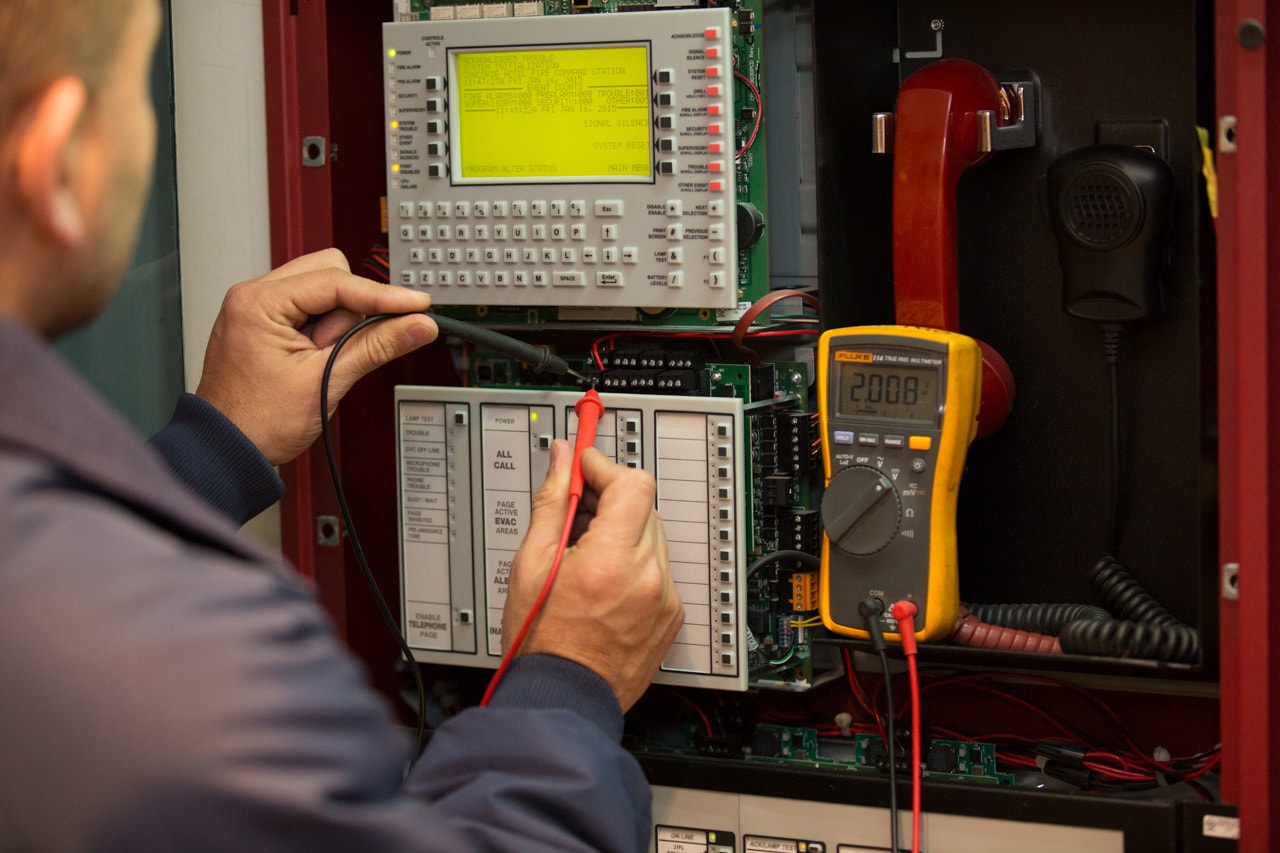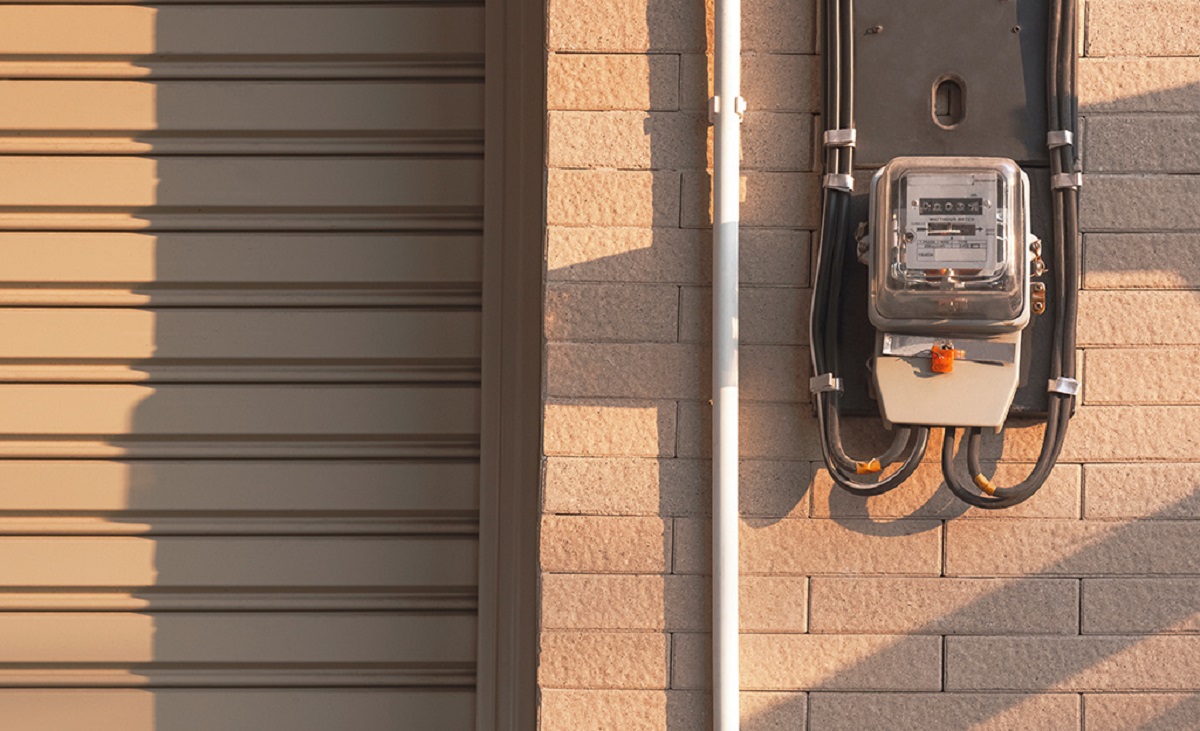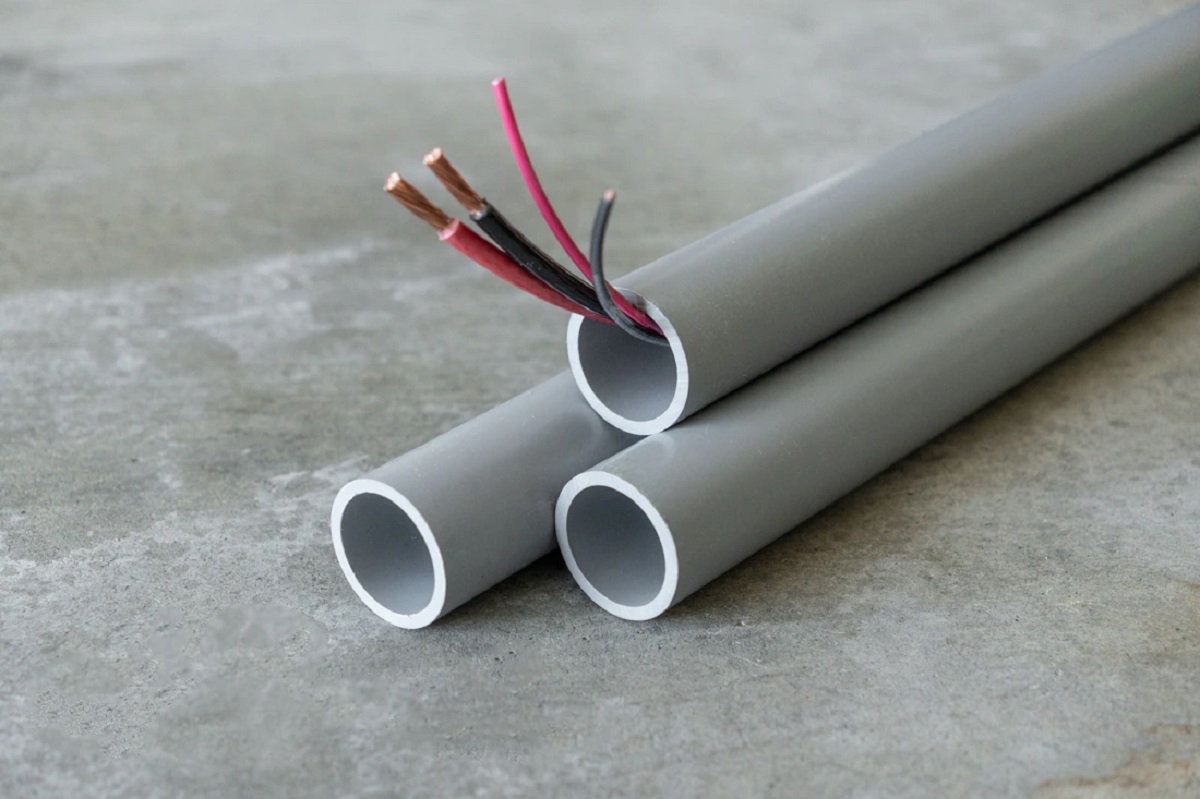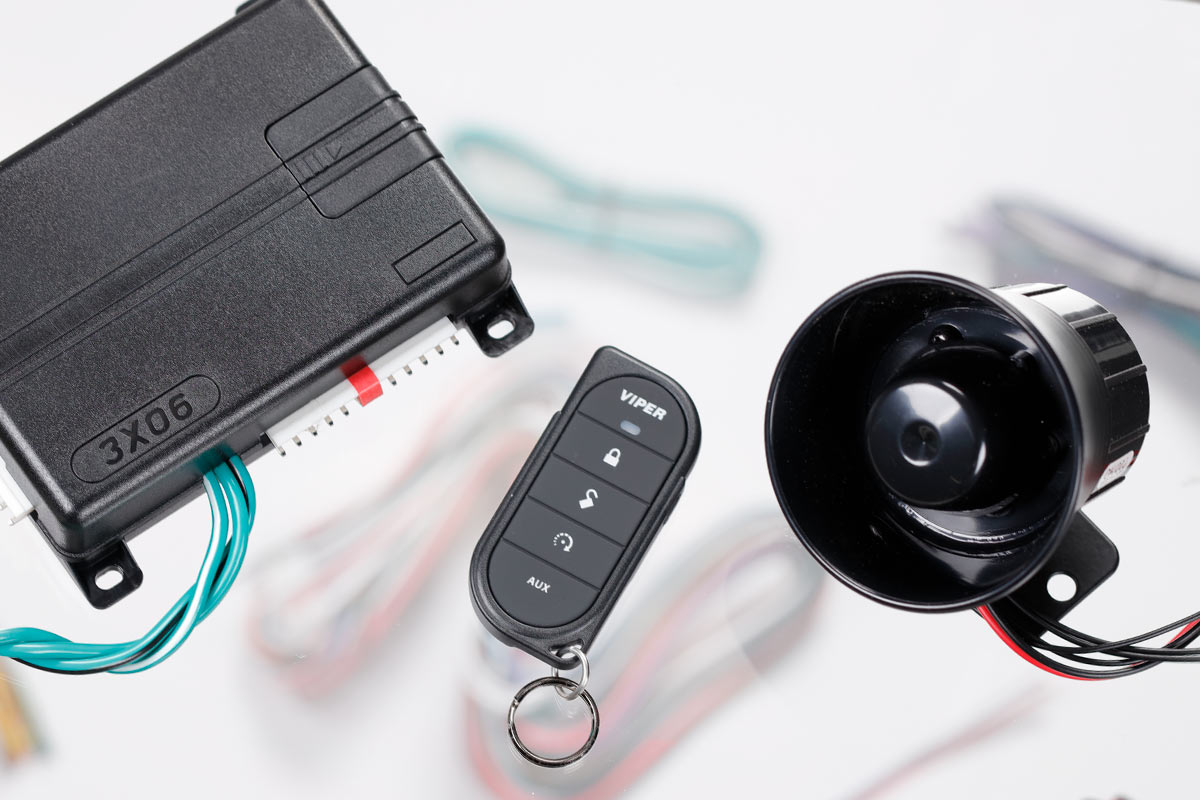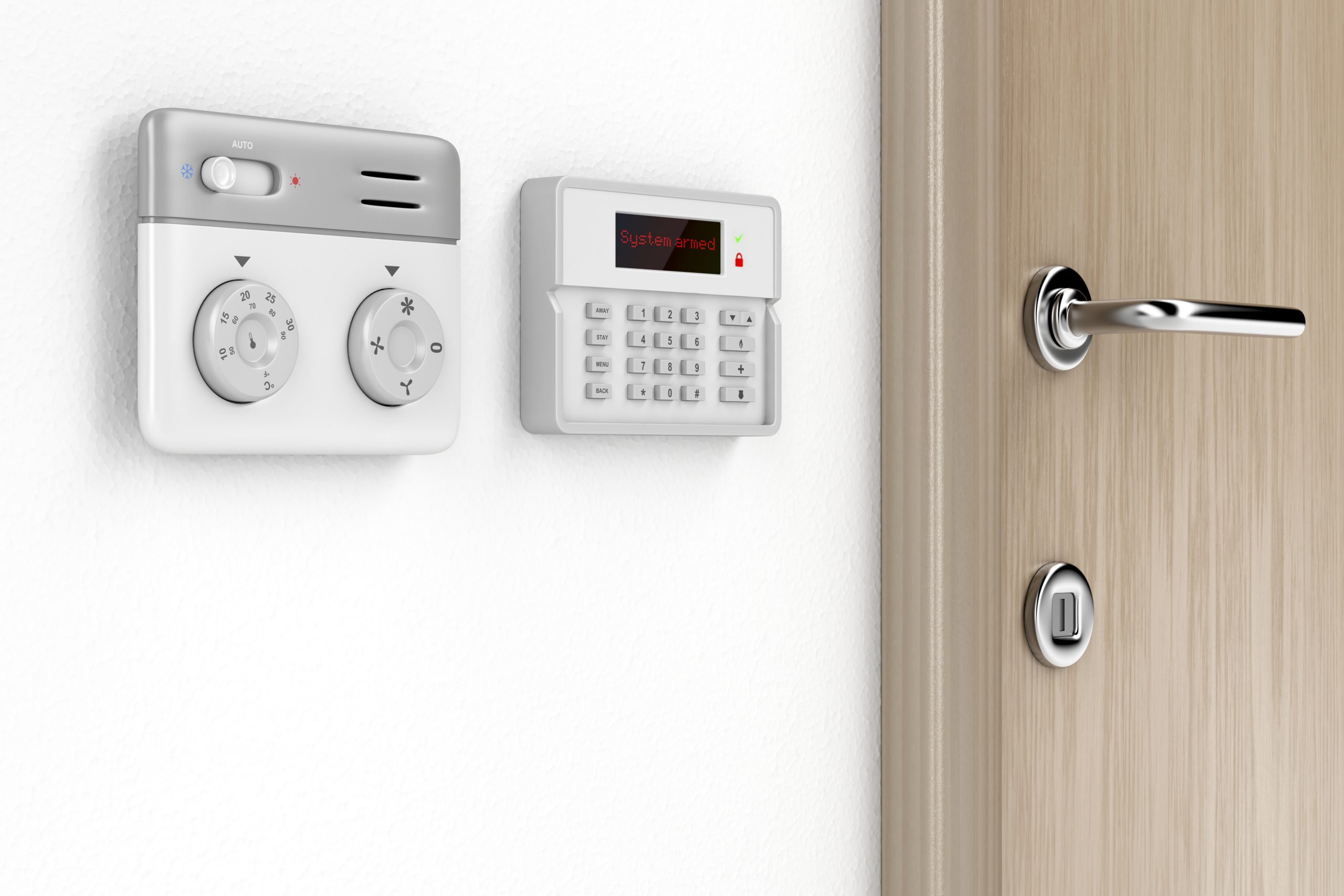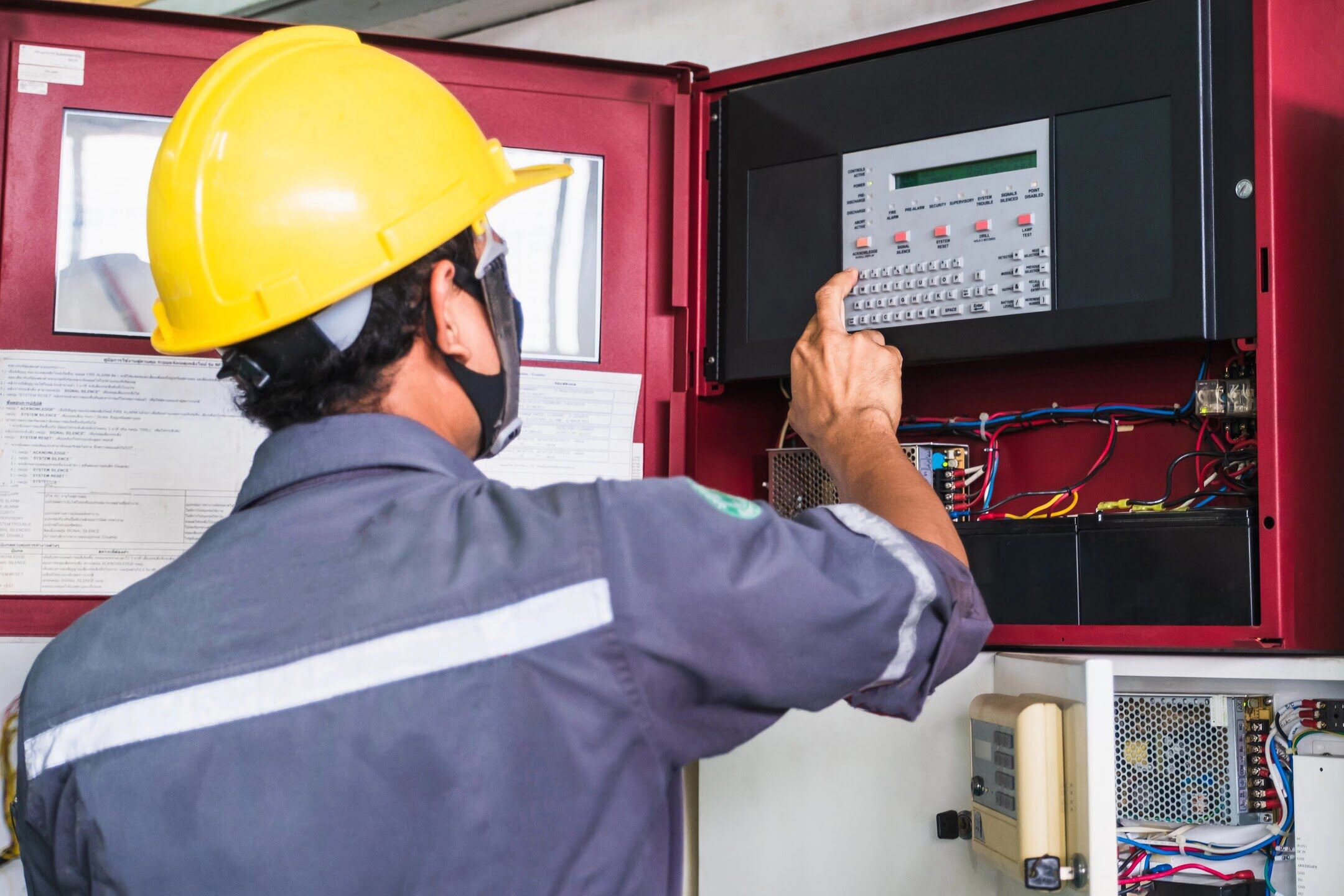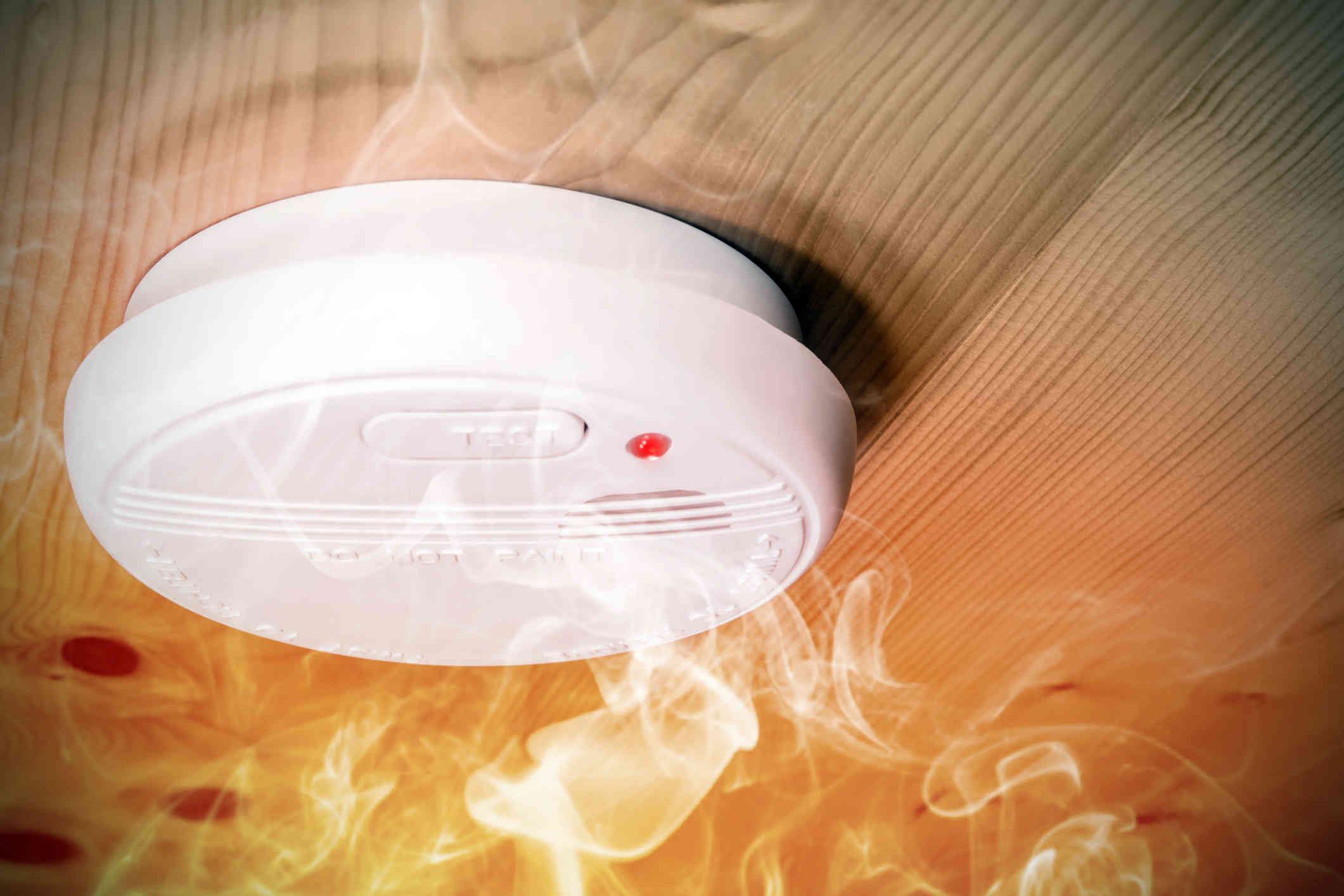Home>Home Security and Surveillance>What Types Of Microphones Are Used In Fire Alarm Systems
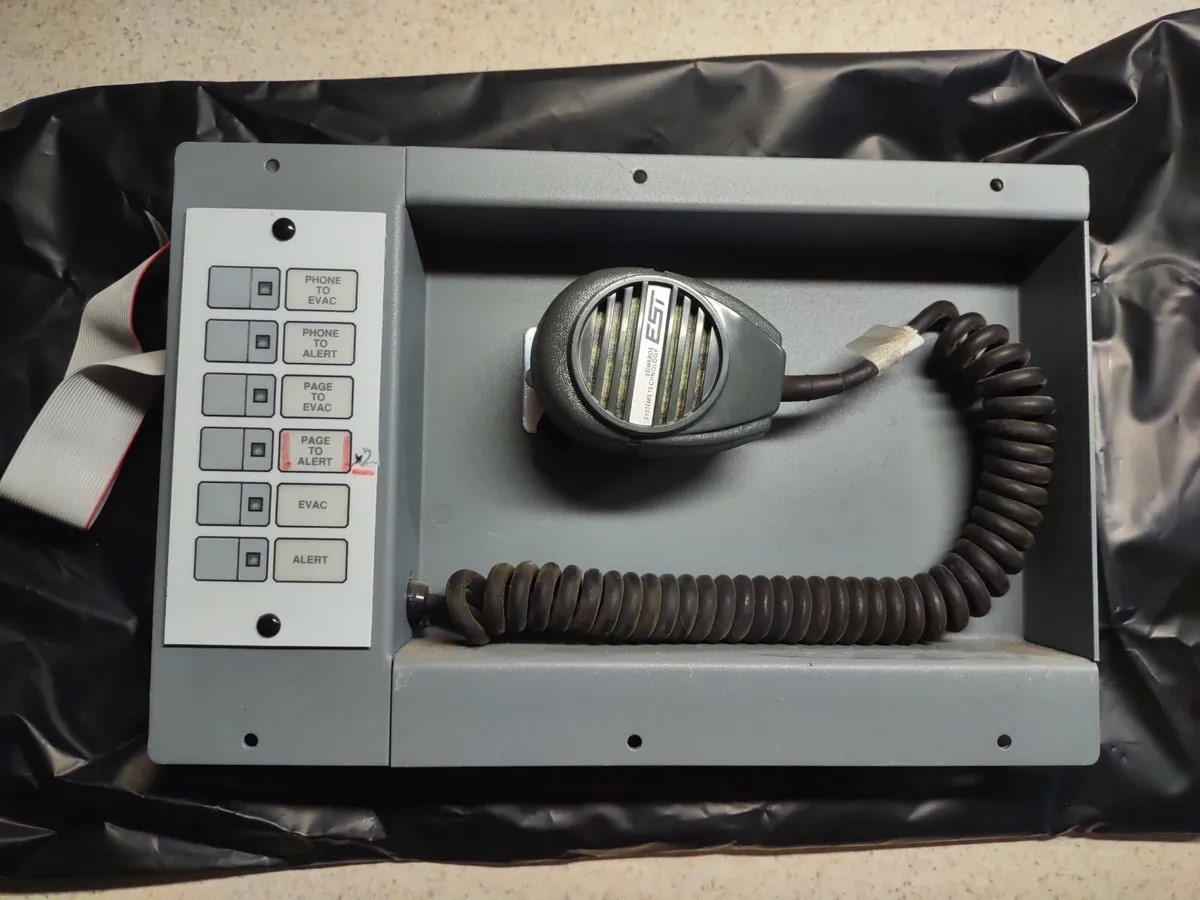

Home Security and Surveillance
What Types Of Microphones Are Used In Fire Alarm Systems
Modified: October 19, 2024
Discover the different types of microphones used in fire alarm systems for home security and surveillance, ensuring effective detection and response to potential threats.
(Many of the links in this article redirect to a specific reviewed product. Your purchase of these products through affiliate links helps to generate commission for Storables.com, at no extra cost. Learn more)
Introduction
Protecting our homes and loved ones is a top priority for many of us. One way to ensure their safety is by investing in a reliable fire alarm system. Fire alarm systems are designed to detect the presence of smoke or fire and alert occupants to evacuate the premises. These systems consist of various components, including microphones, which play a crucial role in detecting and transmitting fire-related sounds. In this article, we will explore the different types of microphones used in fire alarm systems and the factors to consider when choosing the right microphone for your home security needs.
Key Takeaways:
- Different types of microphones, such as ceiling, wall-mounted, and outdoor microphones, play crucial roles in detecting fire-related sounds in fire alarm systems. Each type has unique advantages and is chosen based on specific requirements and environmental factors.
- When choosing a microphone for a fire alarm system, factors such as sound detection capabilities, installation method, coverage area, compatibility, maintenance, and compliance with standards should be considered. Working with a professional can help ensure the right microphone is selected for optimal performance.
Types of Microphones Used in Fire Alarm Systems
When it comes to fire alarm systems, different types of microphones are used to ensure accurate and reliable sound detection. Let’s take a closer look at some of the most common types of microphones used in fire alarm systems:
- Ceiling Microphones: These microphones are installed on the ceiling and are highly sensitive to sounds emitted from different directions. They are designed to effectively detect fire-related sounds, such as smoke alarms or the crackling of flames. Ceiling microphones are discreet and blend seamlessly into the room’s décor, making them a popular choice for both residential and commercial spaces.
- Wall-Mounted Microphones: As the name suggests, wall-mounted microphones are fixed to the walls of a building. They are strategically placed to capture sounds at ear level and provide accurate detection of fire alarm signals. Wall-mounted microphones are commonly used in hallways, corridors, and other areas with limited ceiling space.
- In-Cabinet Microphones: In-cabinet microphones are specifically designed to be integrated into fire alarm control panels or cabinets. These microphones are compact and provide precise sound detection within the confined space of the panel. They are an ideal choice for centralized fire alarm systems in larger buildings or complexes.
- Outdoor Microphones: Outdoor microphones are built to withstand harsh weather conditions and are primarily used in outdoor environments. These microphones are installed around the exterior of a building and can detect fire-related sounds occurring in open spaces. They are essential for ensuring comprehensive detection and early warning in outdoor areas, such as parking lots or recreational areas.
- Beamforming Microphones: Beamforming microphones are advanced devices that use digital signal processing to focus on specific sound sources while suppressing background noise. These microphones have the ability to track the direction of sound and enhance the accuracy of fire alarm systems. Beamforming microphones are commonly used in large open spaces, such as auditoriums or stadiums, where precise sound detection is crucial.
- Wireless Microphones: Wireless microphones provide the flexibility of easy installation and relocation. These microphones operate using wireless technology, eliminating the need for cumbersome wiring. The wireless feature allows for greater placement options and simplifies the installation process. They are an excellent choice for retrofitting existing buildings with fire alarm systems or areas where wiring installation is challenging.
Each type of microphone listed above has its distinct advantages and is chosen based on the specific requirements of the fire alarm system and its environment. It’s essential to consider factors such as the location of installation, the size of the area to be covered, and the level of sensitivity needed when selecting the appropriate microphone for a fire alarm system.
Ceiling Microphones
Ceiling microphones are a popular choice for fire alarm systems due to their effective sound detection capabilities and discreet installation. These microphones are typically mounted on the ceiling, allowing them to capture sound from various directions and provide comprehensive coverage of the room or area.
One of the key advantages of ceiling microphones is their ability to pick up sounds emitted from smoke alarms or the crackling of flames, which are critical indicators of a fire. This sensitivity ensures that the alarm system can detect the presence of smoke or fire at an early stage, allowing for prompt action to be taken.
Moreover, ceiling microphones are designed to blend seamlessly with the room’s decor, minimizing visual obtrusion. They are available in different styles and colors, making it easier to find a microphone that matches the aesthetic of the space. This feature is particularly advantageous for residential settings where homeowners want the fire alarm system to be unobtrusive.
Installation of ceiling microphones is relatively straightforward. They are typically mounted using brackets or fixtures and connected to the fire alarm control panel. It is crucial to ensure that the microphones are correctly positioned to optimize sound detection. Professional installation is recommended to ensure proper placement and calibration.
Ceiling microphones are an excellent choice for a wide range of environments, including homes, offices, hotels, and retail spaces. However, they may not be suitable for areas with high ceilings or rooms with specific architectural features that can hinder the microphone’s sound detection capabilities.
When selecting ceiling microphones for a fire alarm system, it is essential to consider factors such as the size of the room or area to be covered, the level of sensitivity required, and any specific architectural constraints. Working with a professional security and surveillance expert can help ensure that the right type of ceiling microphones are selected and installed effectively.
Wall-Mounted Microphones
Wall-mounted microphones are a popular choice for fire alarm systems in areas where ceiling installation is not feasible or practical. These microphones are strategically mounted on the walls at ear level, allowing for optimal sound detection and accurate monitoring of fire-related sounds.
One of the major advantages of wall-mounted microphones is their ability to provide targeted sound detection in specific areas, such as hallways, corridors, or stairwells. These areas are commonly used as evacuation routes during emergencies, and having a microphone positioned at ear level ensures that any fire alarm signals can be detected promptly.
Installation of wall-mounted microphones is relatively simple. They are typically mounted using brackets or fixtures and connected to the fire alarm control panel. It is important to ensure that the microphones are placed in a location where they can capture sound effectively while minimizing the risk of accidental damage.
Wall-mounted microphones offer a practical solution in situations where ceiling installation is not possible due to architectural constraints or budget limitations. They are particularly suitable for retrofitting existing buildings with fire alarm systems or areas where the ceiling height is too high for ceiling microphones to be effective.
When choosing wall-mounted microphones for a fire alarm system, it is important to consider the specific layout and design of the area. Factors such as the length of the hallways, the presence of corners or intersections, and the overall acoustics of the space should be taken into account. Professional installation is recommended to ensure proper positioning and calibration of the microphones.
Wall-mounted microphones are an excellent choice for enhancing the effectiveness of a fire alarm system by providing accurate sound detection in crucial areas. By installing these microphones strategically, occupants can receive timely alerts and evacuate safely during an emergency.
In-Cabinet Microphones
In-cabinet microphones are specifically designed to be integrated into fire alarm control panels or cabinets. These microphones offer precise sound detection within the confined space of the panel, making them an essential component of centralized fire alarm systems in larger buildings or complexes.
One of the key advantages of in-cabinet microphones is their compact size, which allows them to fit seamlessly within the control panel or cabinet without occupying additional space. This integration ensures that the microphone is protected from external elements and reduces the risk of accidental damage.
In-cabinet microphones are designed to detect high-frequency sounds, such as fire alarm signals, within the panel. They are highly sensitive to alert sounds and provide accurate detection, ensuring that any fire-related events are immediately recognized by the fire alarm system.
Installation of in-cabinet microphones typically involves connecting them to the fire alarm control panel or cabinet using the appropriate wiring. It is crucial to follow the manufacturer’s instructions and guidelines during installation to ensure proper functionality and alignment with the control panel’s settings.
These microphones are particularly well-suited for larger buildings or complexes where a centralized fire alarm system is necessary. They ensure that the entire system is synchronized and can detect fire-related sounds accurately, enabling a swift response and evacuations.
When selecting in-cabinet microphones for a fire alarm system, it is essential to consider factors such as the size and capacity of the control panel or cabinet. Additionally, compatibility with the existing fire alarm system and any specific requirements of the building should be taken into account. Consulting with a professional installer is advisable to ensure proper integration and functionality.
In-cabinet microphones are a critical component of fire alarm systems in larger buildings, offering precise sound detection within the control panel or cabinet. By choosing the right in-cabinet microphones and integrating them effectively, building owners can enhance the overall efficiency and reliability of their fire alarm systems.
When choosing a microphone for a fire alarm system, look for ones that are specifically designed for high-temperature and high-humidity environments to ensure reliable performance in case of an emergency.
Outdoor Microphones
Outdoor microphones are specifically designed to withstand harsh weather conditions and are an essential component of fire alarm systems for outdoor spaces. These microphones are strategically installed around the exterior of a building to detect fire-related sounds occurring in open areas.
One of the key advantages of outdoor microphones is their rugged construction and weather resistance. They are built to withstand varying temperatures, moisture, and other environmental elements, ensuring reliable performance even in challenging outdoor conditions.
Outdoor microphones are highly sensitive to sounds, allowing them to detect fire alarm signals from a considerable distance. By capturing these sounds early on, they provide an early warning system, giving occupants ample time to evacuate and emergency personnel the opportunity to respond promptly.
Installation of outdoor microphones requires careful consideration of the building’s layout and outdoor areas of concern. They are typically mounted on exterior walls, poles, or other suitable structures to optimize sound detection. Professional installation is recommended to ensure proper placement and positioning for optimal performance.
These microphones are particularly crucial for facilities with large outdoor spaces, such as parking lots, recreational areas, or industrial sites. By detecting fire-related sounds in these areas, outdoor microphones contribute to comprehensive fire alarm coverage and help prevent the spread of fire to indoor areas.
When selecting outdoor microphones for a fire alarm system, it is important to consider factors such as the size of the outdoor space, the distance between the microphones, and any potential environmental challenges. Compatibility with the existing fire alarm system and the level of sensitivity required should also be taken into account.
Outdoor microphones play a vital role in ensuring the safety and security of exterior spaces. By incorporating these microphones into the fire alarm system, building owners can maximize the coverage and detection capabilities, providing effective early warning mechanisms in the event of a fire.
Beamforming Microphones
Beamforming microphones are advanced devices that use digital signal processing to focus on specific sound sources while suppressing background noise. These microphones are designed to track the direction of sound and enhance the accuracy and precision of fire alarm systems.
One of the key advantages of beamforming microphones is their ability to isolate and amplify fire-related sounds while reducing the impact of background noise. This targeted sound detection ensures that the fire alarm system can quickly identify fire alarm signals, such as smoke alarms or crackling flames, even in noisy environments.
Beamforming microphones employ a combination of multiple microphones and signal processing algorithms to determine the direction of the sound source. By adjusting the audio pickup electronically, the microphone can effectively focus on the desired sound and eliminate unwanted noise, providing clear and accurate detection of fire-related sounds.
These microphones are particularly beneficial in large open spaces, such as auditoriums, stadiums, or conference halls, where traditional microphones may struggle to provide precise sound detection. Beamforming microphones can cover a wide area and capture sounds from different directions, ensuring comprehensive coverage and early detection of fire-related events.
Installation of beamforming microphones may require careful planning and positioning to optimize their performance. It is essential to consider factors such as the layout and acoustics of the space, potential sources of background noise, and the specific coverage requirements of the fire alarm system. Consulting with an audio engineer or professional installer is recommended to ensure proper installation and calibration.
When selecting beamforming microphones for a fire alarm system, it is important to consider factors such as the size and configuration of the space, the level of ambient noise, and any specific sound requirements. Compatibility with the existing fire alarm system and the ability to integrate with other audio devices should also be taken into account.
Beamforming microphones offer advanced sound detection capabilities, ensuring accurate and reliable monitoring of fire-related sounds in challenging environments. By incorporating these microphones into a fire alarm system, building owners can enhance the overall effectiveness and early warning mechanisms for fire safety.
Wireless Microphones
Wireless microphones offer a flexible and convenient solution for fire alarm systems, providing easy installation and relocation options. These microphones operate using wireless technology, eliminating the need for extensive wiring and allowing for greater flexibility in microphone placement.
One of the key advantages of wireless microphones is their ease of installation. Without the need for cumbersome wiring, these microphones can be quickly and easily installed in desired locations. This makes them an excellent choice for retrofitting existing buildings with fire alarm systems or areas where the installation of wired microphones is challenging.
Wireless microphones also offer the benefit of flexibility. They can be easily relocated to accommodate changes in the building layout or to optimize sound detection in different areas. This adaptability allows for efficient coverage of different zones within a building and ensures that the fire alarm system remains effective even as the building’s needs change over time.
Another advantage of wireless microphones is their compatibility with other wireless devices, such as fire alarm control panels, sirens, or notification systems. This seamless integration ensures smooth communication between components and enables a comprehensive fire alarm system that can effectively alert occupants in the event of a fire.
When selecting wireless microphones for a fire alarm system, it is important to consider factors such as the range and coverage area of the wireless technology, the battery life of the microphone, and any potential interference from other wireless devices. Additionally, compatibility with the existing fire alarm system’s wireless protocols and security measures should be taken into account.
While wireless microphones offer convenience and flexibility, it is essential to regularly monitor and maintain their battery life to ensure uninterrupted functionality. Routine inspections by a professional technician can help identify and address any issues that may affect the microphone’s performance.
Wireless microphones are a popular choice for fire alarm systems due to their ease of installation and flexibility. By incorporating wireless microphones into a fire alarm system, building owners can enhance the efficiency of the system and ensure reliable sound detection for timely fire detection and response.
Factors to Consider When Choosing a Microphone for Fire Alarm Systems
Selecting the right microphone is crucial for the effectiveness and accuracy of a fire alarm system. To ensure optimal performance, here are some key factors to consider when choosing a microphone for your fire alarm system:
1. Sound Detection Capabilities: The primary function of a microphone in a fire alarm system is to detect fire-related sounds. Consider the microphone’s sensitivity and frequency response to ensure it can accurately detect smoke alarms, crackling flames, or other fire alarm signals within the designated coverage area.
2. Application and Environment: Evaluate the specific requirements of your fire alarm system and the environment in which the microphone will be installed. Consider factors such as the size and layout of the space, potential sources of background noise, and any architectural constraints.
3. Installation Method: Different microphones require specific mounting methods. Determine whether ceiling-mounted, wall-mounted, in-cabinet, outdoor, beamforming, or wireless microphones are most suitable for your fire alarm system, based on the specific needs and constraints of the installation location.
4. Coverage Area: Assess the area that needs to be covered by the microphone. Consider the size and shape of the space, as well as any areas of particular importance, such as hallways, stairwells, or outdoor areas. Ensure the selected microphone provides comprehensive coverage of the desired areas.
5. Compatibility: Ensure that the chosen microphone is compatible with the fire alarm control panel and other components of your fire alarm system. The microphone should seamlessly integrate with the existing system to ensure proper communication and functionality.
6. Maintenance and Reliability: Consider the maintenance requirements and reliability of the microphone. Assess factors such as the microphone’s durability, lifespan, and the availability of replacement parts. Regular maintenance and testing are essential to ensure the microphone continues to function effectively.
7. Compliance with Standards: Verify that the microphone meets industry standards and regulations for fire alarm systems. Look for certifications and approvals to ensure the microphone has undergone rigorous testing and complies with relevant standards for fire safety.
By taking these factors into account, you can select the most appropriate microphone for your fire alarm system. Working with a professional security and surveillance expert can provide guidance and ensure that the chosen microphone meets your specific requirements while adhering to industry standards.
Conclusion
Choosing the right microphone is essential for ensuring the effectiveness and reliability of a fire alarm system. The selection process should consider factors such as sound detection capabilities, the application and environment, installation method, coverage area, compatibility, maintenance and reliability, and compliance with standards.
Ceiling microphones offer discreet installation and comprehensive coverage in various settings, while wall-mounted microphones are ideal for targeted sound detection in hallways and corridors. In-cabinet microphones provide precise detection within control panels, while outdoor microphones can withstand harsh weather conditions and enhance coverage in open spaces.
Beamforming microphones use advanced technology to isolate and amplify fire-related sounds and are suitable for large open areas. Wireless microphones offer flexibility and easy installation, making them ideal for retrofitting existing buildings or areas with limited wiring options.
Understanding the specific requirements of your fire alarm system and environment is crucial when selecting the right microphone. By considering factors such as sound detection capabilities, application and environment, installation method, coverage area, compatibility, maintenance and reliability, and compliance with standards, you can ensure optimal performance and accurate sound detection.
Working with a professional security and surveillance expert can provide guidance and expertise in selecting the most appropriate microphone for your fire alarm system. Regular maintenance and testing of the microphone are essential to ensure its continued functionality and effectiveness in detecting fire-related sounds.
Investing in the right microphone for your fire alarm system is an important step in enhancing the safety and security of your property. By prioritizing the selection of a high-quality and suitable microphone, you can have peace of mind knowing that your fire alarm system is equipped to detect any fire-related events promptly and efficiently, allowing for swift action and ensuring the safety of occupants.
Frequently Asked Questions about What Types Of Microphones Are Used In Fire Alarm Systems
Was this page helpful?
At Storables.com, we guarantee accurate and reliable information. Our content, validated by Expert Board Contributors, is crafted following stringent Editorial Policies. We're committed to providing you with well-researched, expert-backed insights for all your informational needs.
